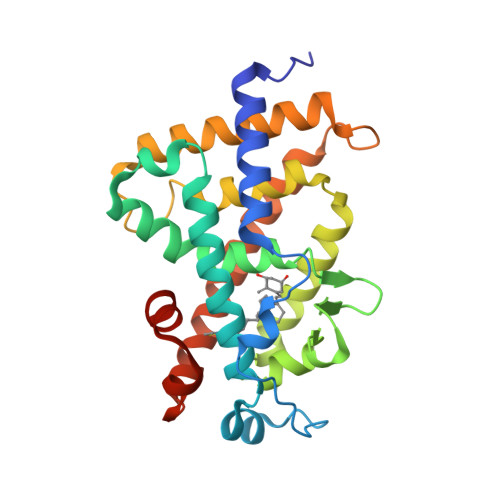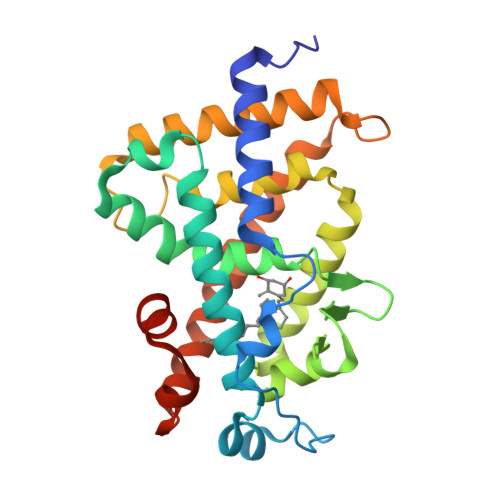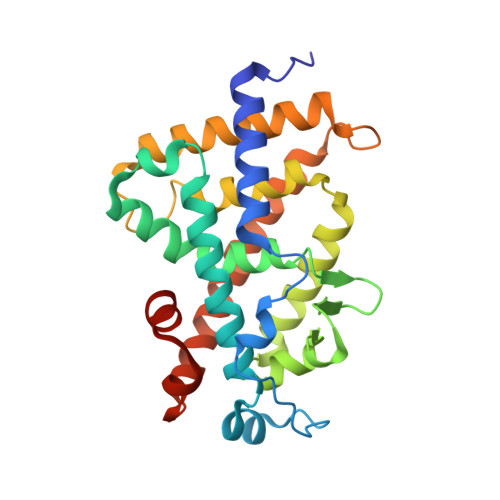Crystal structure of a vitamin D3 analog, ZK203278, showing dissociated profile.
Rochel, N., Moras, D.(2012) Anticancer Res 32: 335-339
- PubMed: 22213324
- Primary Citation of Related Structures:
3KPZ - PubMed Abstract:
The plethora of actions of 1α,25-dihydroxyvitamin D(3), the active form of the seco-steroid hormone vitamin D, in various systems suggested wide clinical applications in treatments for renal osteodystrophy, osteoporosis, psoriasis, cancer, autoimmune diseases and prevention of graft rejection. However, the major side-effects of hypercalcemia of VDR ligands limit their use. ZK203278, a novel synthetic analog has been shown to act as a potent immunomodulator and presents dissociated biologic profile with low calcemic side-effects. Here, we described the crystal structures of the hVDR ligand-binding domain in complex with ZK203278 and determined its correlation with its specific dissociated biologic profile. The VDR/ZK203278 structure, in comparison with VDR/1α,25-dihydroxyvitamin D(3), shows specific interactions of the thiazole group of ZK203278 with residues of H3, H11 and H12. These specific interactions may lead to altered selective interactions with co-regulators and consequently to the dissociated biologic profile of this novel ligand.
Organizational Affiliation:
Institut de Génétique et de Biologie Moléculaire et Cellulaire (IGBMC), Institut National de Santé et de Recherche Médicale (INSERM) U964/Centre National de Recherche Scientifique (CNRS) UMR 7104/Université de Strasbourg, 67404 Illkirch, France. rochel@igbmc.fr



















